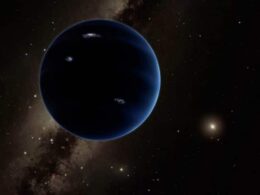Supernova fireworks in the Pinwheel
By Paul Sutherland on August 25, 2011 5:00 pm / no comments
Astronomers are celebrating after discovering an exploding supernova in a nearby galaxy. The star’s death blast was spotted at 8pm on Wednesday UK time by the scientists from Oxford, England, using a robotic telescope scanning the sky from California.
NASA is preparing to turn the Hubble space telescope to monitor the event which is is the closest and brightest of its kind seen for 40 years.
The supernova is still brightening in a galaxy known as the Pinwheel, or M101, just 21 million light-years away in the constellation of the Great Bear, Ursa Major. Experts say it might become bright enough to be seen from back gardens by stargazers with binoculars or small telescopes. It is in part of the sky that is circumpolar, or always above the horizon, for the UK and much of the US and Europe.
The scientists, who were taking part in a sky scan by the Palomar Transient Factory, using a 48-inch Schmidt telescope, are excited because the supernova is of a kind known as Type Ia. These have characteristics so similar to each other that they can be used by astronomers to determine the size of the universe and the way it is growing.
Oxford team leader Dr Mark Sullivan said last night: “The most exciting thing is that this is the kind we use to measure the expansion of the universe. Seeing one explode so close by allows us to study these events in unprecedented detail.”
The supernova, which has been labelled PTF11kly, is still getting brighter. Dr Sullivan said: “The best time to see this exploding star will be just after evening twilight in the Northern hemisphere in a week or so’s time. You’ll need dark skies and a good pair of binoculars, although a small telescope would be even better.”
The discovery comes just weeks after a supernova was discovered in another galaxy familiar with amateur astronomers, M51 in Canes Venatici, the Hunting Dogs.
Following the discovery, astronomers around the world were scrambled to get follow up images and data. Among the first to respond, within 90 minutes, was the robotic two-meter Liverpool Telescope in the Canary Islands.
A closer supernova exploded in a satellite galaxy of the Milky Way, the Large Magellanic Cloud, in 1987, but it was of a rarer type that cannot be used for scaling the universe.
« Cargo ship crashes on way to ISS | Pulsar planet is a gem of a discovery »


